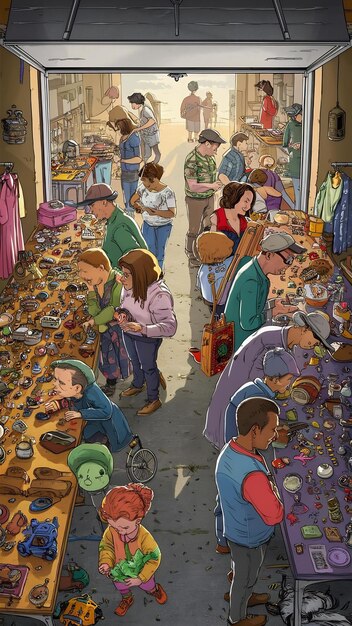US Homelessness Surge 2025: Impact on Social Services

A projected 12% increase in homelessness by 2025 in the US is poised to significantly strain social services, exacerbating existing resource limitations across housing, healthcare, mental health, and employment support systems nationwide.
The landscape of social welfare in the United States faces an impending challenge. Recent projections suggest a substantial 12% increase in homelessness by 2025, a figure that sends ripples of concern through policymakers, service providers, and communities. This isn’t merely an abstract statistic; it represents individuals, families, and mounting pressure on an already stretched social safety net. Understanding the multifaceted impact of this surge on the nation’s social services is crucial for formulating effective strategies and mitigating a potential humanitarian crisis.
Understanding the Projected Increase: Causes and Context
The anticipated rise in homelessness isn’t a sudden phenomenon but the culmination of several complex and interconnected socio-economic factors. Disentangling these root causes is essential for appreciating the scale of the challenge and preparing for its ripple effects on social services. We often look at the numbers, but behind each percentage point is a human story shaped by policy, economic trends, and individual circumstances.
Economic precarity plays a significant role. Despite some positive economic indicators, income inequality remains stark, and wages for many low-income workers have not kept pace with the soaring cost of living, particularly housing. The evaporation of pandemic-era protections, such as eviction moratoriums and enhanced unemployment benefits, has left many vulnerable households exposed. These temporary measures, while crucial during the crisis, masked deeper systemic issues that are now resurfacing with renewed intensity. The buffer they provided is gone, and the underlying fragilities are now more exposed than ever, making the projected increase almost inevitable without significant intervention.
Key Economic Drivers
- 📈 Rising housing costs: Rent hikes far outpace wage growth in many urban and suburban areas, making stable housing increasingly unaffordable.
- 📉 Stagnant wages: For many low-wage workers, earnings haven’t kept pace with inflation, eroding purchasing power and savings.
- 🚫 End of pandemic protections: The cessation of eviction moratoriums and enhanced unemployment benefits removed critical safeguards for vulnerable families.
Beyond economics, systemic issues contribute to chronic homelessness. These include a persistent lack of affordable housing units, particularly for extremely low-income individuals. The waiting lists for public housing and rental assistance vouchers are often years long, reflecting a severe supply-demand imbalance. Furthermore, mental health crises and substance use disorders, often co-occurring, are significant drivers of homelessness, yet access to adequate and timely treatment remains a formidable barrier for many, leading to cyclical patterns of instability. The intricate web of these factors creates a persistent challenge, requiring holistic and sustained solutions.
Understanding these drivers is the first step in comprehending how a 12% increase will materialize in real-world scenarios. It paints a picture of growing demand on services that are already operating at or beyond capacity. This context is critical for anyone seeking to understand the downstream impact on social services, as it informs the specific areas where the most pressure will be felt and where proactive measures are most urgently needed. Without addressing these root causes, any response will be merely a bandage on a gaping wound.
Housing and Shelter Systems: Overwhelmed and Overstretched
The primary and most direct impact of a projected 12% increase in homelessness will be on the nation’s housing and shelter systems. These services, already struggling to meet current demand, face an impending surge that threatens to push them well beyond their breaking point. The consequences will be visible in myriad ways, from overcrowded shelters to increased unsheltered populations, leading to significant humanitarian and public health concerns.
Shelters across the US frequently operate at or near full capacity, especially during colder months or economic downturns. An additional 12% increase means more individuals and families seeking refuge, potentially leading to longer waiting lists, stricter eligibility criteria, and a greater number of people forced to live on the streets, in vehicles, or in other unsafe conditions. This puts immense pressure not only on existing facilities but also on the staff who manage them, leading to burnout and a decline in the quality of care. The current infrastructure simply wasn’t designed to absorb this level of sudden growth.
Escalating Challenges for Shelter Providers
- 🛌 Capacity strain: Existing shelters will be unable to accommodate the surge, leading to more unsheltered individuals.
- ⏳ Increased waitlists: Lengthy queues for shelter beds will become even more common, delaying critical assistance.
- 📉 Resource depletion: Limited funding and staff will be stretched thinner, impacting the quality and availability of services.
Beyond emergency shelters, the increase will also strain transitional housing programs and permanent supportive housing initiatives. These programs are vital for helping individuals and families move from homelessness to stable, independent living. With higher numbers of people entering homelessness, fewer transitional beds will become available, creating a bottleneck in the system. The pathway out of homelessness becomes narrower and more congested, trapping individuals in a cycle of instability, making recovery significantly harder. This further highlights the need for preventative measures rather than just reactive solutions.
Furthermore, the problem isn’t just about bed count; it’s about the comprehensive support needed to prevent chronic homelessness. The increased demand will make it harder for service providers to connect individuals with the case management, mental health services, and employment assistance often provided within these housing programs. The focus inevitably shifts from long-term solutions to immediate crisis management, a reactive approach that does little to address the root causes and often proves more costly in the long run. The system risks becoming a revolving door without adequate resources for sustained recovery.

Healthcare System Strain: A Looming Public Health Crisis
The connection between homelessness and public health is undeniable, and a projected 12% increase in the unsheltered population will place an extraordinary strain on an already overburdened healthcare system. Individuals experiencing homelessness face significantly higher rates of chronic health conditions, infectious diseases, and mental health crises, often exacerbated by exposure to the elements, poor nutrition, and lack of consistent medical care. When their numbers rise, so too does the demand for emergency services, primary care, and specialized treatments.
Emergency rooms often serve as the de facto primary care providers for the homeless population, contributing to overcrowding and increased costs. A surge in homelessness means more frequent ER visits for conditions that could have been prevented or managed with regular care, such as uncontrolled diabetes, hypertension, or respiratory infections. This puts undue pressure on emergency medical staff and diverts resources from other critical needs. The lack of stable housing and address makes follow-up care virtually impossible, leading to a revolving door of readmissions and deteriorating health outcomes, further complicating care management.
Healthcare Impacts and Challenges
- 🚨 ER overcrowding: Increased reliance on emergency departments for non-emergency care.
- 💉 Disease transmission: Higher risk of infectious disease outbreaks in concentrated unsheltered populations.
- ⚕️ Chronic condition mismanagement: Difficulty in providing consistent care for long-term health issues.
Beyond acute care, there are significant public health implications. Concentrated populations without access to sanitation, clean water, or predictable shelter are more susceptible to infectious disease outbreaks, including tuberculosis, hepatitis, and now, potentially, new emerging pathogens. This not only puts the homeless population at risk but also poses broader threats to community health. Public health agencies will need to intensify outreach efforts, provide vaccinations, and establish mobile clinics, all while grappling with limited budgets and staff.
Moreover, the mental health burden associated with homelessness is profound. Trauma, stress, and isolation contribute to higher rates of depression, anxiety, and severe mental illnesses. The lack of stable housing often makes it difficult for individuals to adhere to medication regimens or engage in consistent therapy. A larger homeless population means an increased need for mental health crisis intervention, psychiatric services, and substance abuse treatment—services that are already critically underfunded and inaccessible for many. The interconnectedness of mental health and homelessness means neglecting one exacerbates the other, creating a vicious cycle that is incredibly difficult to break.
Addressing this aspect requires a coordinated effort between healthcare providers, social workers, and housing authorities. Without stable housing, health outcomes for this vulnerable population are likely to worsen significantly, leading to higher healthcare expenditures and a continued cycle of poverty and poor health. The projected increase demands a proactive and integrated public health response rather than a reactive one.
Mental Health and Substance Use Services: A Growing Crisis
The intertwining of homelessness with mental health disorders and substance use is well-documented, creating a complex challenge for social services. The projected 12% surge in homelessness suggests a proportional rise in demand for these specialized services, placing immense pressure on systems already struggling with long waiting lists, funding shortfalls, and a scarcity of qualified professionals. This isn’t merely an increase in volume but an intensification of complex needs.
Many individuals experiencing homelessness have underlying mental health conditions, ranging from severe persistent mental illness like schizophrenia and bipolar disorder to depression and anxiety. These conditions can both contribute to and be exacerbated by the experience of homelessness. The constant stress, trauma, lack of safety, and disruption of daily routines can worsen symptoms, making recovery and reintegration into society incredibly challenging. Service providers report that connecting unsheltered individuals with consistent mental healthcare is often a significant hurdle, as stability is a prerequisite for effective treatment. Without a safe place to sleep, attending therapy or managing medication becomes an insurmountable task.
Pressures on Mental Health & Substance Use Support
- 🧠 Overwhelmed clinics: Existing psychiatric and therapeutic services face increased caseloads.
- 💊 Treatment adherence issues: Homelessness complicates medication management and consistent therapy.
- 🚨 Crisis intervention overload: More instances requiring immediate psychological and substance abuse support.
Similarly, substance use disorders are frequently co-occurring conditions, both contributing to and resulting from homelessness. Self-medication often becomes a coping mechanism for the profound pain and despair associated with living on the streets. Access to comprehensive addiction treatment, including detoxification, rehabilitation, and harm reduction strategies, is already limited. A 12% increase in the homeless population means more individuals needing these services, yet the current capacity is far from sufficient. This creates a dangerous cycle where addiction makes exiting homelessness harder, and homelessness perpetuates addiction.
The demand for crisis intervention teams and street outreach programs will also intensify. These teams are vital for engaging with individuals who may be resistant to traditional services or who are in acute distress. However, their resources are finite. More calls for assistance, more individuals experiencing mental health emergencies in public spaces, and more people in need of immediate support will stretch these essential services thin, potentially leading to longer response times and less effective interventions. This puts both the individual and the community at greater risk, highlighting a critical gap in immediate care.
Addressing this dual crisis requires integrated care models that treat mental health and substance use disorders concurrently with housing solutions. However, the projected increase underscores the urgent need for significant investment in expanded capacity, workforce development, and innovative outreach strategies to meet the escalating needs of this vulnerable population. Without robust mental health and substance use services, attempts to reduce homelessness will be akin to bailing water with a sieve.
Employment and Economic Support: Pathways to Stability Blocked
Gaining and maintaining stable employment is a critical pathway out of homelessness, yet the projected increase in the unsheltered population signals significant challenges for employment and economic support services. Individuals experiencing homelessness face numerous barriers to securing work, including lack of an address, poor health, lack of identification, criminal records, and discrimination. As more people enter homelessness, the demand for tailored employment assistance will surge, testing the limits of existing programs designed to help individuals re-enter the workforce.
Employment support services typically offer job training, resume building, interview preparation, and direct job placement assistance. For someone experiencing homelessness, these services are even more vital, yet harder to access. Imagine trying to prepare for a job interview when you haven’t showered, don’t have clean clothes, or lack a reliable phone. The basic necessities that many take for granted become profound obstacles. A larger homeless population means more people needing these fundamental supports, straining the capacity of case managers and vocational counselors who are already managing heavy caseloads. Their ability to provide individualized attention diminishes, making success stories harder to come by.
Barriers to Employment for Homeless Individuals
- 📄 Lack of documentation: Difficulty obtaining IDs, birth certificates, or other necessary papers.
- 🛀 Hygiene and appearance: Limited access to facilities for personal care, impacting interview readiness.
- 📞 Communication challenges: No reliable phone or internet access for job searches and follow-up.
- ⚖️ Legal barriers: Criminal records can limit job opportunities, particularly for those with low-level offenses.
Furthermore, the increased demand will highlight gaps in connecting homeless individuals with meaningful employment opportunities that offer living wages and benefits. Many available jobs for those without stable housing are often temporary, exploitative, or insufficient to cover basic living expenses, including housing. This creates a cycle where low-wage work doesn’t provide enough income to escape poverty, leading to continued housing instability. The challenge isn’t just finding a job, but finding a sustainable one that breaks the cycle of homelessness. This requires a shift in approach, focusing on long-term economic stability.
Financial literacy and benefits navigation services will also be under increased pressure. Many individuals experiencing homelessness are unaware of or struggle to access public benefits like SNAP, Medicaid, or disability assistance, which can provide a crucial safety net. As the homeless population grows, the need for hands-on assistance in navigating complex bureaucratic systems will rise, requiring more social workers and navigators. Without these supports, individuals may miss out on essential resources that could help stabilize their situation and create a bridge to employment. This underscores the need for comprehensive wraparound services rather than isolated interventions.
The projected increase necessitates a multi-pronged approach that not only provides employment assistance but also addresses the systemic barriers to employment and ensures that job opportunities lead to genuine economic stability. Without this, efforts to reduce homelessness through employment will continue to face uphill battles, and social service agencies will be continually playing catch-up.
Legal and Advocacy Services: Protecting the Rights of the Unhoused
As the number of individuals experiencing homelessness grows, so too does the need for robust legal and advocacy services. Unhoused individuals are disproportionately targeted by discriminatory practices, face challenges in accessing justice, and often require legal assistance to navigate complex health, housing, and benefit systems. A 12% increase in this vulnerable population will undoubtedly escalate the demand on a legal aid infrastructure that is already under-resourced, aiming to protect fundamental human rights and ensure equitable treatment.
One of the most pressing needs involves defending against anti-homeless ordinances. Many cities implement laws that criminalize activities associated with homelessness, such as sleeping in public spaces, panhandling, or loitering. These ordinances effectively punish individuals for their state of being, rather than addressing the root causes of their circumstances. With more people on the streets, there will likely be an increase in arrests and citations, necessitating more legal representation for individuals facing these charges, often leading to fines or incarceration that further entrench their homelessness. Legal advocacy is essential to challenge these punitive measures and uphold civil liberties.
Legal Challenges for the Homeless Community
- 📜 Anti-homeless legislation: Laws criminalizing public activities associated with homelessness.
- 🏛️ Access to justice: Difficulties in navigating legal systems without proper representation or resources.
- ⚖️ Discrimination: Experiencing bias in housing, employment, and public interactions.
Beyond direct criminal defense, legal services are crucial for helping homeless individuals access and maintain essential benefits. This includes assistance with applying for disability benefits, navigating Medicaid approvals, appealing denials of housing assistance, and even addressing issues like identity theft or consumer fraud. Without a fixed address or consistent access to mail, receiving and responding to official communications can be nearly impossible. Legal aid attorneys and paralegals play a vital role in cutting through bureaucratic red tape, ensuring that individuals receive the support they are entitled to. The increased caseload will stretch these organizations thin, making it harder to provide personalized and timely assistance.
Advocacy groups will also face heightened pressure to push for policy changes that address the systemic drivers of homelessness. This involves advocating for increased funding for affordable housing, expanding access to mental health and substance use treatment, and promoting “Housing First” models. A larger homeless population provides more empirical data and human stories to bolster these advocacy efforts, but it also means a more urgent and complex battle against entrenched systemic issues. The fight for human dignity and stable housing becomes more imperative with rising numbers.
The projected rise in homelessness underscores the critical need for increased funding for legal aid organizations and a coordinated effort among legal professionals, social workers, and community advocates. Protecting the rights of the unhoused isn’t just about charity; it’s about justice and upholding the principles of a fair and equitable society, a task that becomes more challenging with each new individual entering the ranks of the homeless.

Community and Public Safety Responses: Balancing Needs and Perception
The nexus of homelessness and public spaces often leads to complex challenges for communities and public safety agencies. A 12% increase in the unsheltered population, while a humanitarian issue, also impacts emergency services, urban planning, and the broader social fabric. Balancing the immediate needs of individuals experiencing homelessness with public perceptions and safety concerns will become an even more delicate and critical task for local governments and law enforcement. This requires an evolving approach that moves beyond traditional policing to embrace more compassionate and effective strategies.
Emergency services, including fire and rescue, often respond to calls related to individuals experiencing homelessness, whether for medical emergencies, fires in encampments, or welfare checks. An increased homeless population will likely lead to a higher volume of such calls, diverting resources from other community needs. This places additional strain on first responders, who may not always have the training or resources to address the specific needs of unhoused individuals, leading to suboptimal outcomes and potential burnout. The challenge is not just the volume of calls, but their specialized nature, requiring a nuanced response.
Impact on Community and Public Safety
- 🚨 Increased emergency calls: Higher demand for police, fire, and medical responses related to homelessness.
- 🤝 Community tension: Balancing compassionate outreach with public concerns over visible homelessness.
- 🔄 Resource reallocation: Shifting public safety resources from traditional roles to homelessness response.
Public perceptions of homelessness can also be a significant issue. As unsheltered populations become more visible, community concerns about public order, sanitation, and safety often arise. This can lead to tension between residents, businesses, and homeless individuals, sometimes resulting in calls for more punitive measures rather than compassionate solutions. Local governments will be forced to navigate these competing interests, seeking strategies that address the humanitarian crisis without further marginalizing an already vulnerable group. Finding a middle ground that serves all community members effectively is a persistent and growing challenge, requiring robust communication and collaborative efforts.
The role of law enforcement in responding to homelessness is also evolving. Traditional approaches centered on arrests for minor offenses have proven ineffective and costly. Instead, many jurisdictions are exploring co-responder models, where police officers are paired with mental health professionals or social workers during calls involving homeless individuals. This approach aims to de-escalate situations, connect individuals to services, and reduce arrests. However, scaling these programs to meet a 12% increase in homelessness will require significant investment in training, personnel, and cross-agency collaboration. It’s a shift from enforcement to engagement, but one that demands considerable resources to be truly impactful.
Ultimately, a projected increase in homelessness requires communities to adopt more comprehensive and humane public safety strategies that prioritize outreach, service connection, and prevention. This balance between addressing immediate concerns and implementing long-term solutions will be paramount for maintaining public order and fostering community well-being in the face of escalating challenges. The success of these strategies will depend on the willingness of local leaders to invest in proactive solutions rather than simply reacting to the visible symptoms.
| Key Area | Projected Impact |
|---|---|
| 🏠 Housing & Shelter | Increased overcrowding, longer waitlists, and more unsheltered individuals due to capacity strain. |
| 🏥 Healthcare Services | More ER visits, higher risk of disease spread, and difficulty managing chronic conditions. |
| 🧠 Mental Health & SUD | Overwhelmed treatment centers, increased crisis interventions, and challenges with consistent care. |
| 💼 Employment Support | Greater demand for job training and benefits navigation, hindering pathways to economic stability. |
Frequently Asked Questions About Homelessness and Social Services
The projected increase is driven by a confluence of factors including the soaring cost of housing, stagnant wages for low-income workers, the expiration of pandemic-era eviction moratoriums, and persistent challenges in accessing mental healthcare and substance abuse treatment. These elements combine to erode the financial stability of vulnerable households, pushing more individuals and families into housing insecurity.
Emergency shelters, already operating at high capacity, will face severe overcrowding, leading to longer waiting lists and increased numbers of unsheltered individuals. Transitional and permanent supportive housing programs will also see diminished availability, slowing down the critical process of moving people out of homelessness and into stable living situations, creating a significant bottleneck in the system.
An increased homeless population means higher demands on emergency rooms for basic care, an elevated risk of infectious disease outbreaks due to unsanitary conditions, and greater difficulty in managing chronic health conditions. Mental health services will also be severely strained, as will substance abuse treatment, exacerbating existing public health challenges and leading to poorer outcomes for vulnerable individuals.
Employment support services will face an overwhelming demand for assistance, including job training, resume building, and placement. Homeless individuals typically face significant barriers to employment, such as lack of an address or ID, and these services, already stretched, will struggle to provide the individualized attention needed to help an increased number of people secure stable, living-wage jobs and exit homelessness.
Legal and advocacy services will be crucial in defending against anti-homeless legislation, assisting individuals in accessing benefits, and fighting discrimination. They will also play an expanded role in advocating for policy changes, such as increased affordable housing funding and integrated service models, to truly address the systemic issues contributing to homelessness and protect the rights of unhoused individuals.
Conclusion
The projected 12% increase in homelessness by 2025 represents more than just a statistical uptick; it signals an impending crisis that will profoundly reshape the landscape of social services across the United States. From overburdened housing and shelter systems to strained healthcare, mental health, and employment support networks, the repercussions will be felt far and wide. This looming challenge underscores the urgent need for a coordinated, empathetic, and resource-intensive response that transcends traditional approaches. Preventing a humanitarian disaster and ensuring the basic dignity of all individuals will depend on proactive policy changes, increased investment in social safety nets, and a collective commitment to addressing the root causes of housing insecurity. The time to act decisively and compassionately is now, to mitigate the severe consequences of this anticipated surge on an already vulnerable population and the systems designed to support them.





